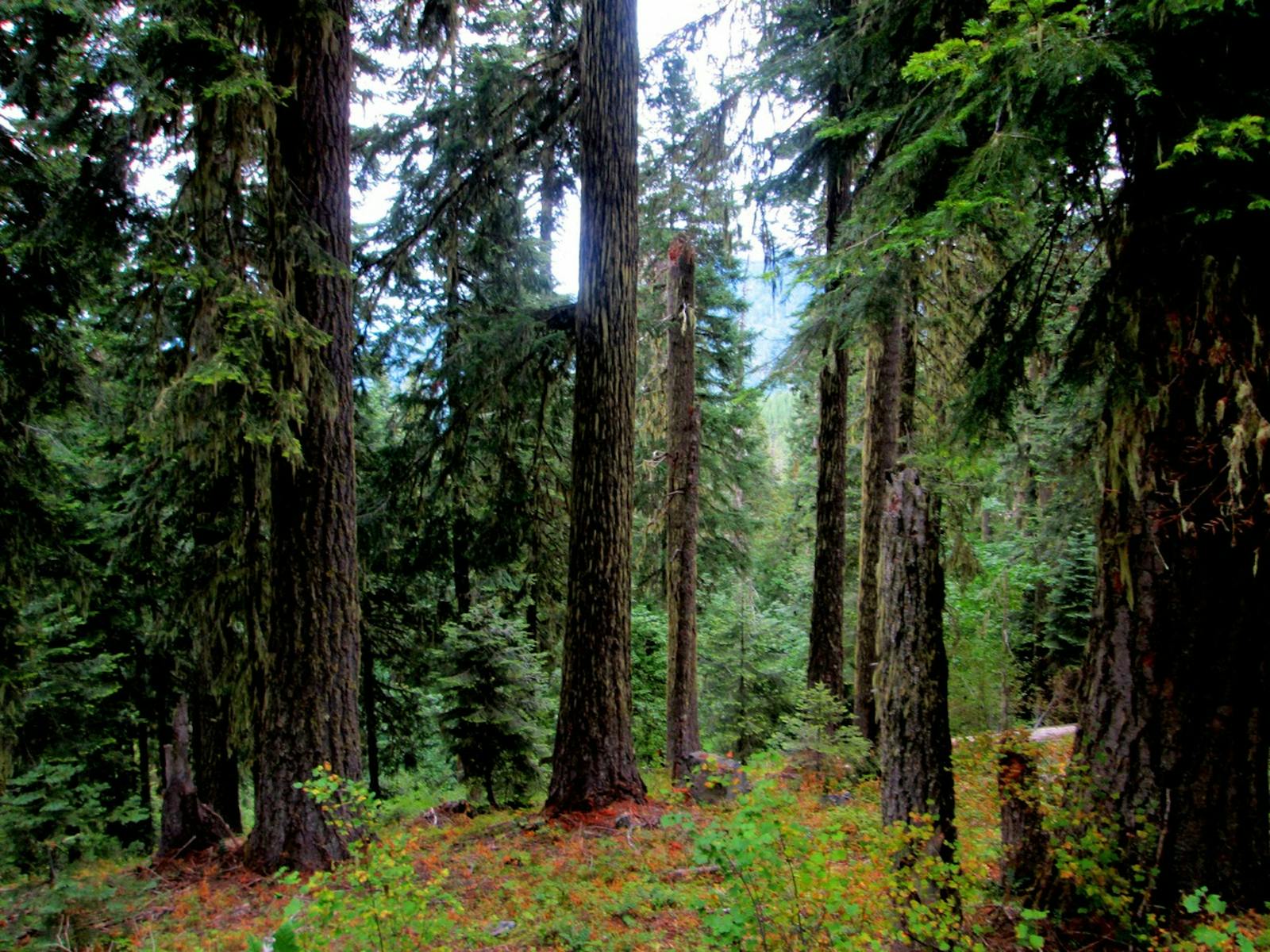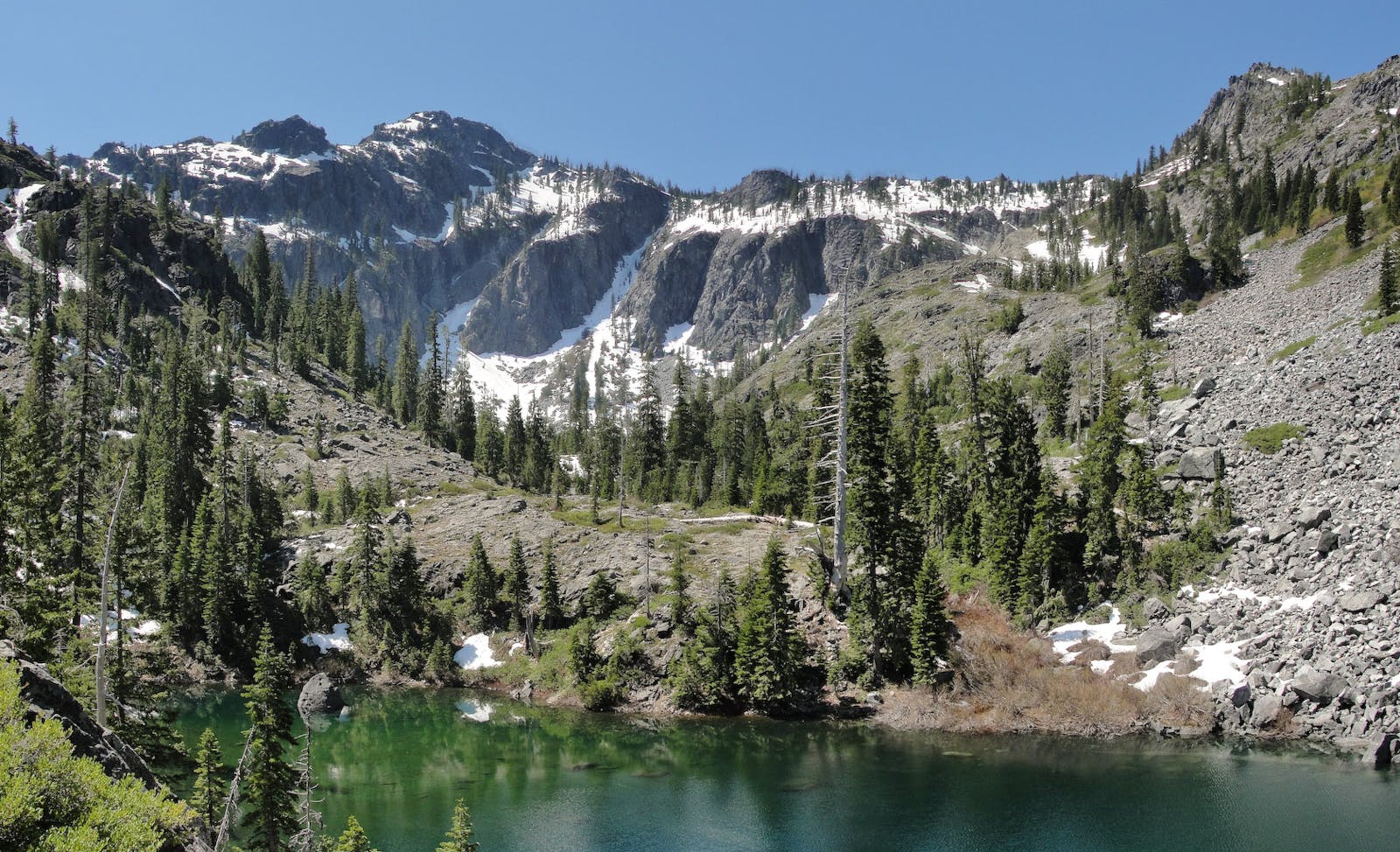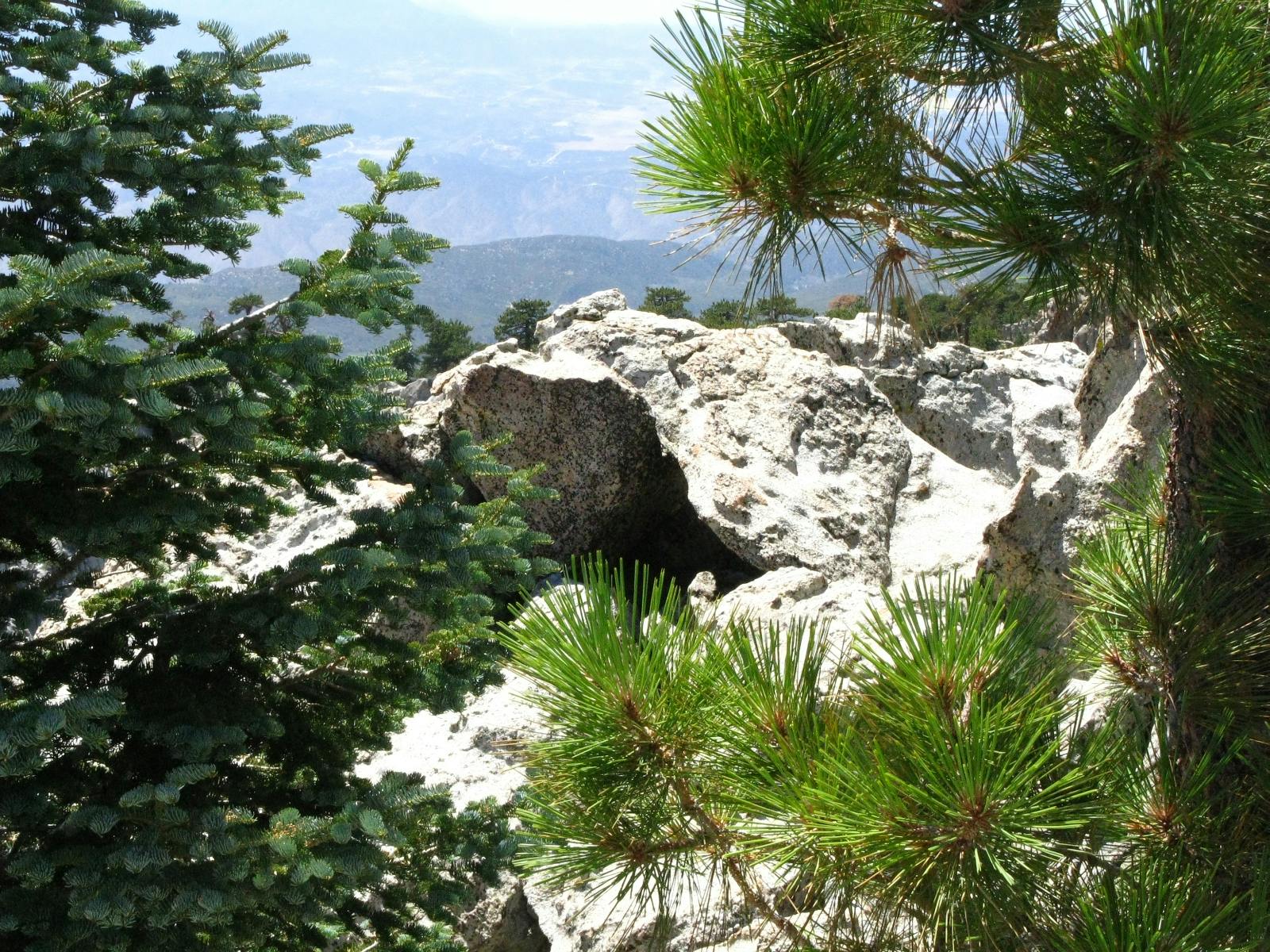Klamath-Siskiyou Forests
The ecoregion’s land area is provided in units of 1,000 hectares. The conservation target is the Global Safety Net (GSN1) area for the given ecoregion. The protection level indicates the percentage of the GSN goal that is currently protected on a scale of 0-10. N/A means data is not available at this time.
Bioregion: Pacific Northwest Coastal Forests (NA15)
Realm: Northern America
Ecoregion Size (1000 ha):
4,840
Ecoregion ID:
357
Conservation Target:
59%
Protection Level:
3
States: United States: CA, OR
The Klamath-Siskiyou Forests ecoregion is the most biologically important temperate forest ecoregion in all of western North America, in terms of concentrations of endemic species (i.e., found nowhere else in the world) and ancient lineages. It ranks as one of the four richest temperate coniferous forests in the world. Straddling southwestern Oregon and northwestern California, inland of the Northern California Coastal Forests ecoregion, the Klamath-Siskiyou derives its biological richness from its rugged terrain, complex geology and soils, and climatic stability moderated by proximity to the Pacific Ocean.
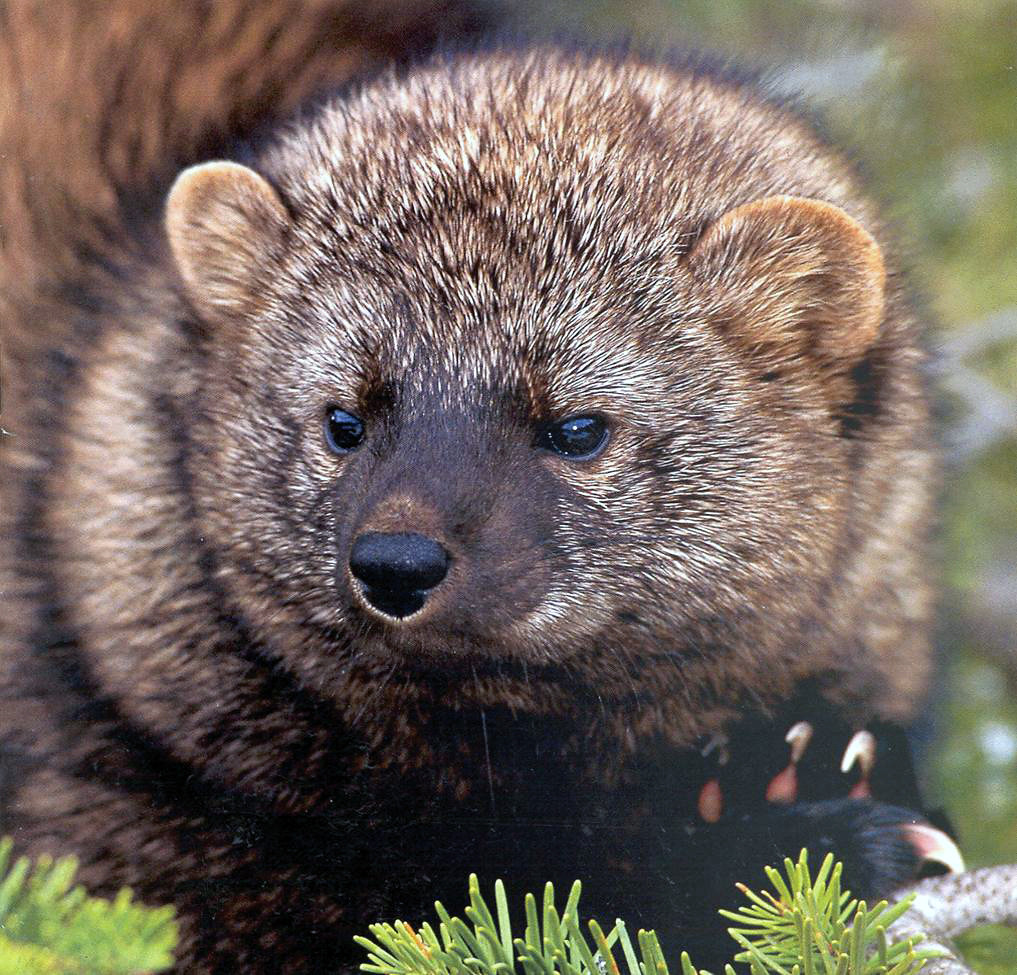
The flagship species of the Klamath-Siskiyou Forests ecoregion is the Pacific fisher. Image credit: Courtesy of USFWS, Flickr
This ecoregion contains four mountain ranges from north to south – the Siskiyous, Marbles, Trinity Alps, and Yolla Bollys – and has soils derived from rocks of several geological periods and including volcanic greenstones, shales, andesite, gabbro, diorite, granite, marble, and some of the largest serpentinite and peridotite formations in North America, which give rise to serpentine soils toxic to many plants but loaded with endemic species. This ecoregion forms the northern section of the California Floristic Province, one of the 36 global biodiversity hotspots.
As with the California Floristic Province, the southern Appalachians, and the southeastern Coastal Plain in North America, the climate of the Klamath-Siskiyou region has been relatively stable for long periods of time, which has allowed it to retain ancient lineages of plants and animals. Such regional climatic refugia are often hotspots of endemism.
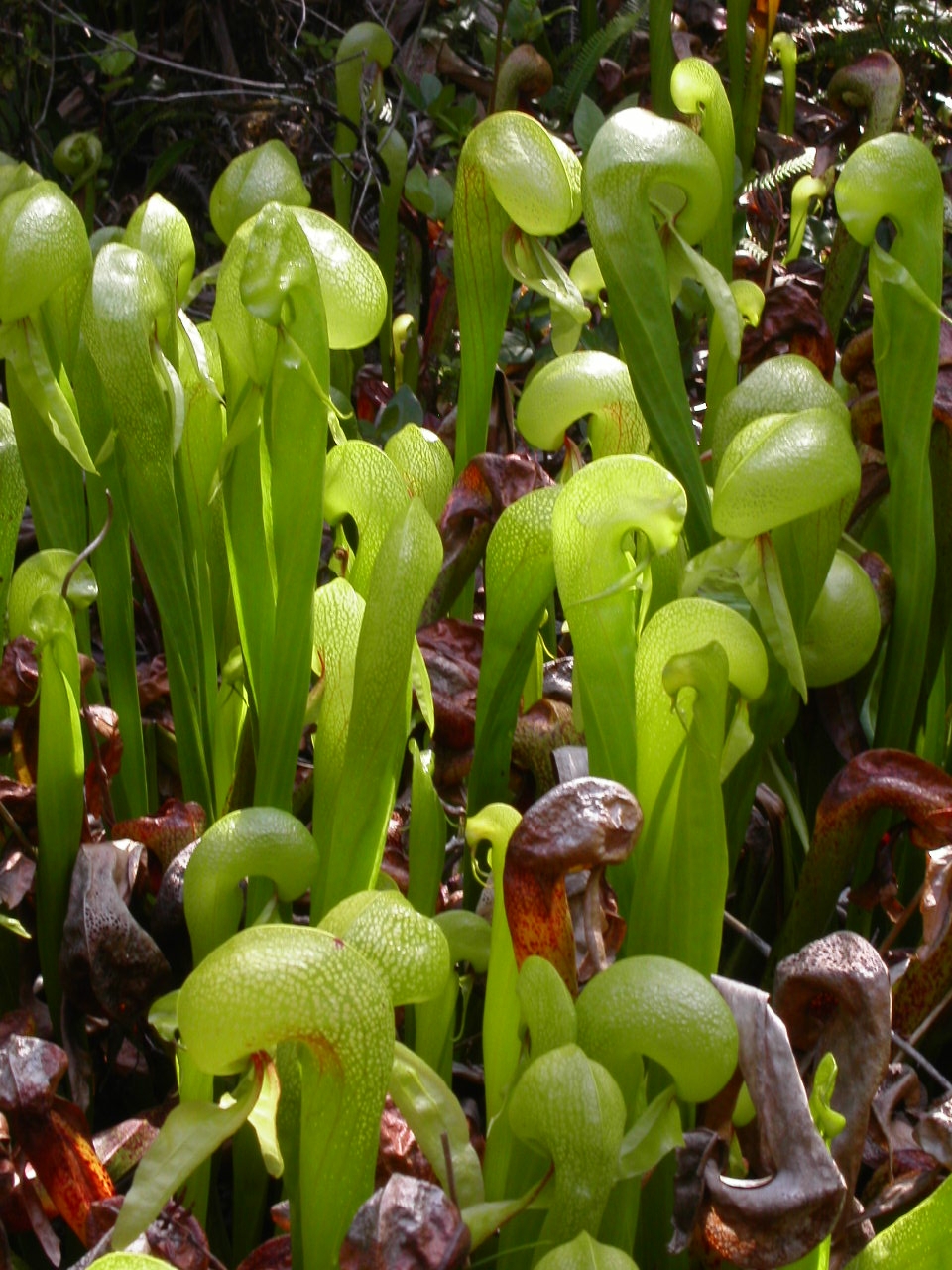
Darlingtonia Californica. Image credit: Creative Commons
In addition, the rugged terrain produces abundant climatic microrefugia such as north-facing slopes, valley bottoms, steep canyons, sinks, and basins, which should help protect species from global warming. Winters are rainy, whereas summers are much drier, especially at lower elevations in rain shadows of the Siskiyou Mountains and coast ranges.
The forests of the region are extremely varied and include wet near-coastal rainforests; moist to somewhat dry inland forests dominated by Douglas-fir, ponderosa pine, sugar pine, white fir, tanoak, canyon live oak, Pacific madrone, incense cedar, and Port Orford cedar; drier oak savannas and woodlands dominated by Oregon white oak and California black oak; and higher-elevation forests with Douglas-fir, western hemlock, white fir, red fir, and many other species.
The number of temperate conifer tree species reaches a global maximum here, with 30 species (including 7 endemics) and up to 17 species within a square mile (2.59 km2). Non-forest communities include chaparral and other shrublands, prairies and oak savannas in the Rogue and Umpqua river valleys, Jeffrey pine savannas and woodlands, and pitcher plant bogs, with the latter two found largely on serpentine substrates and containing many endemic herbs.
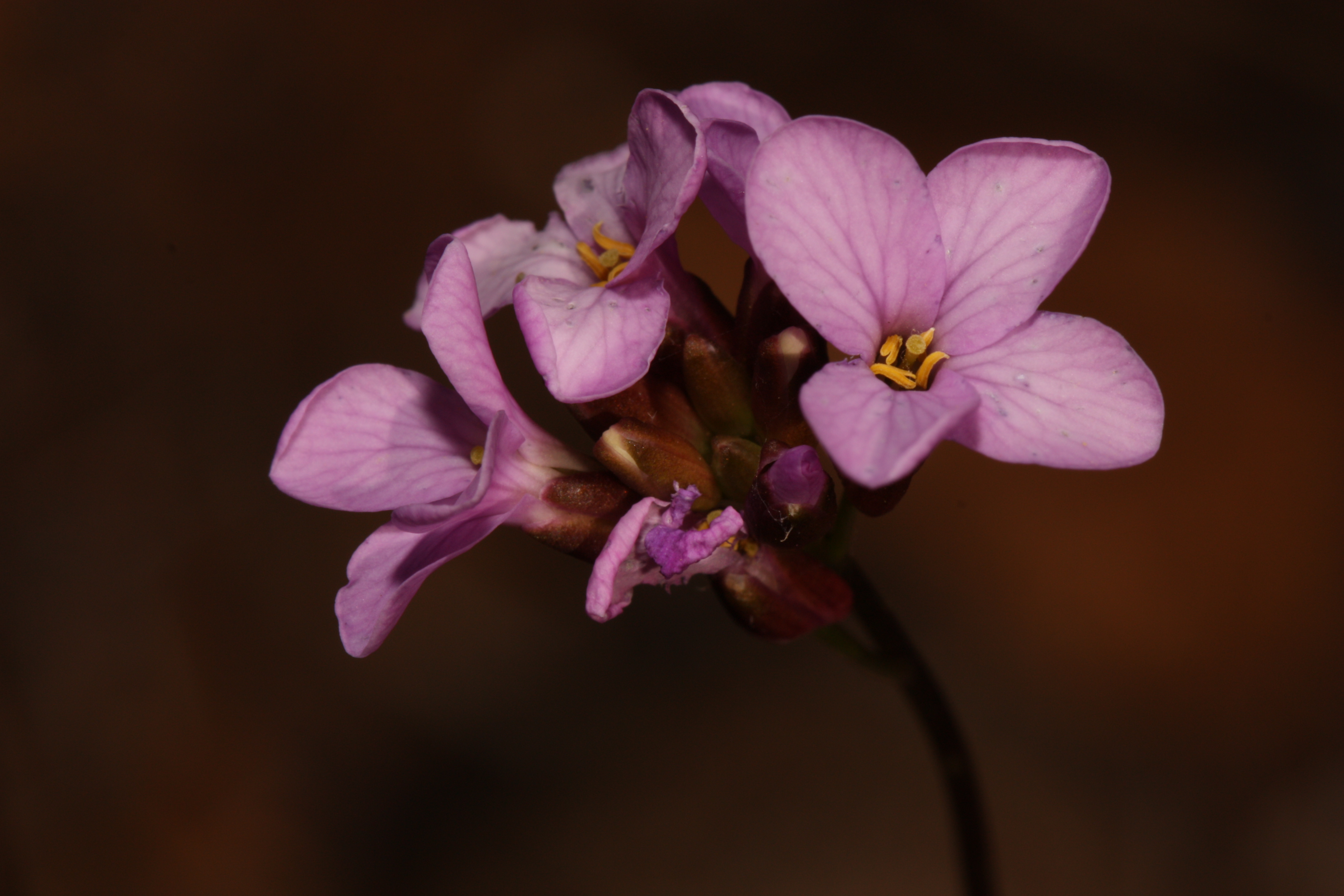
Waldo Rockcress. Image credit: Walter Siegmund, Creative Commons
The pitcher plant found here is in a different genus (Darlingtonia) from the pitcher plants in eastern and northern North America (Sarracenia). The Pacific fisher, a large mammal in the weasel family and the only member of its genus, is prominent here, as are black bears, cougar, northern spotted owls, marbled murrelets, many species of amphibians (including endemics), endemic land snails, spiders, harvestmen, and other invertebrates, and nine species of native salmon and trout.
Although much of its area is remote and wild, the Klamath-Siskiyou ecoregion has suffered from heavy logging, fire suppression, road-building, mining, livestock grazing, extensive marijuana cultivation, and other human activities. Little old-growth forest remains, and roadless areas where natural fires occur are often threatened by salvage logging (cutting of dead or injured trees). Agriculture has altered valleys. Some urban areas are growing, but fortunately urban sprawl is not yet a major threat.
Priority conservation actions for the next decade are to: 1) increase federal, state, and local acquisition of conservation lands, with particular focus on old-growth forests, local hotspots of endemic species occurrences (such as serpentine areas), and climatic microrefugia; 2) improve forest management on public and private lands, with no more logging of old-growth or naturally disturbed early-seral forest; and 3) when possible, reintroduce populations of locally extirpated species such as the wolf, grizzly bear, and wolverine.
Citations
1. Wallace, D.R. 1983. The Klamath Knot. Sierra Club Books, San Francisco.
2. Franklin, J.F., and C.T. Dyrness. 1973 (plus 1988 Supplement). Natural Vegetation of Oregon and Washington. Oregon State University Press, Corvallis.
3. Ricketts, T.H. et al. 1999. Terrestrial Ecoregions of North America: A Conservation Assessment. Island Press, Washington, D.C.
